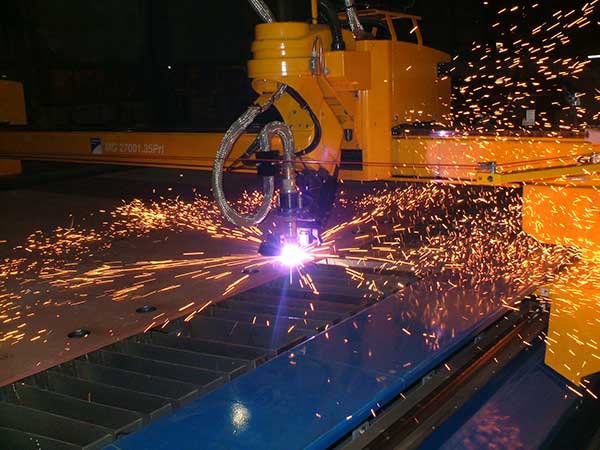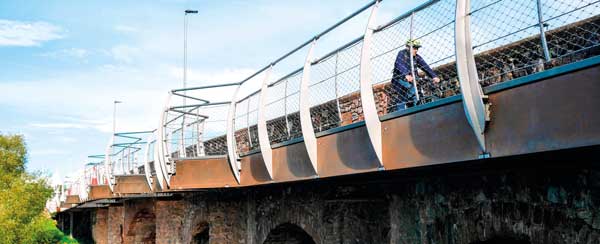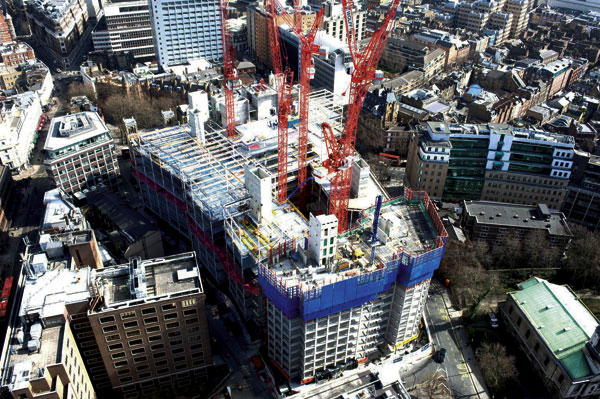Projects and Features
Calculating the fabrication footprint
 The Steel Construction Institute was recently commissioned by the British Constructional Steelwork Association to carry out a study to audit a number of its members, to quantify the carbon footprint of the fabrication process for hot rolled structural steelwork.
The Steel Construction Institute was recently commissioned by the British Constructional Steelwork Association to carry out a study to audit a number of its members, to quantify the carbon footprint of the fabrication process for hot rolled structural steelwork.
As the construction industry becomes more aware of the importance of sustainability, one of the leading areas of concern that has emerged is that of carbon emissions. These can be either embodied or operational. Operational carbon emissions are being reduced via changes to Approved Document L and this has turned attention to how to measure and account for embodied emissions.
This has led to demands for high quality and comprehensive embodied carbon data from construction product manufacturers. However, although the steel construction sector has good data on the environmental impacts of steel production, there has until now been a gap in terms of the downstream impacts of steel-based construction systems, in particular with regard to steelwork fabrication.
Having been commissioned by the British Constructional Steelwork Association (BCSA) to audit some of its steelwork contractor members, the Steel Construction Institute (SCI) collated the results with data returned by steelwork contractors within the BCSA Sustainability Charter scheme, to derive a robust average UK carbon footprint for steelwork fabrication.
The organisation in Europe responsible for standards development, CEN, has recently published a standard (EN 15804) which provides rules for the calculation of embodied carbon for construction products. This standard divides the lifetime of the products into modules, where (for fabricated structural steelwork), module A1 covers steel production, A2 covers transport to the fabricator, A3 covers fabrication and A4 covers transportation to site. The study carried out by SCI covers modules A2, A3 and A4. Data for other modules can be found in a recently published Environmental Product Declaration (EPD).
The weighted average of the carbon emissions from the fabrication of hot rolled structural steelwork was divided into Scope 1, 2 and 3 emissions as defined in the Greenhouse Gas Protocol. Scope 1 emissions are defined as Direct GHG (greenhouse gas) emissions that occur from sources that are owned or controlled by the company.
Examples of this are emissions from combustion in owned or controlled boilers, furnaces, vehicles, etc. Scope 2 emissions are those from the generation of purchased electricity consumed by the company. Purchased electricity is defined as electricity that is purchased or otherwise brought into the organisational boundary of the company.
Scope 3 emissions are a consequence of the activities of the company, but occur from sources not owned or controlled by the company. Some examples of Scope 3 activities are: extraction and production of purchased materials (e.g. welding rods or paint); transportation of purchased fuels; and use of sold products and services. These scopes are separately defined so that companies can report their own company footprint and to avoid double counting. For company carbon reporting, it is only mandatory for companies to report Scope 1 and 2 emissions.
The total average product carbon footprint for structural steelwork (Scope 1, 2 and 3 for modules A2, A3 and A4 collectively) based on a weighted average of all the steelwork contractors assessed is 284 kgCO2e /tonne fabricated steel. The weighted average for the three separate modules is:
• Module A2 – 24 kgCO2e /tonne
• Module A3 – 247 kgCO2e /tonne
• Module A4 – 13 kgCO2e /tonne
The average Scope 3 impact (weighted average) is 154 kgCO2e/tonne of fabricated steel, which gives an average company carbon footprint (Scope 1 and 2) of 130 kgCO2e /tonne.












